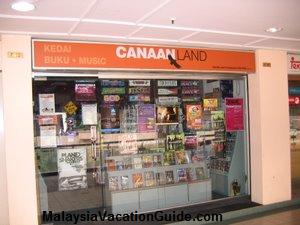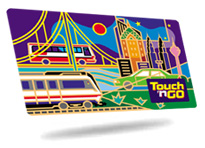
E-government, short for electronic government is the use of information and communication technology to provide and improve government services, and among citizens, businesses and others.
A tremendous effort has been made to enhance service delivery via electronic means since the 1990 announcement of the e-Government initiative for Malaysia. Most apparent is the construction of facilities and amenities to support the electronic flow of information to the public. Then, E-government launched and implemented since the initiation of Multimedia Super Corridor (MSC) by Malaysia Government in 1996. Since, it lead the country into the Information Age.It will help to improve how the government operates internally, enabling the government to be more responsive to the needs of its citizens.

E-government was one of the Seven Flagship Application introduced by MSC in order to lead the Malaysian towards the objectives of Vision 2020. However, there are seven pilot projects of the Electronic Government Flagship Application :
- Project Monitoring System (SPP II)
- Human Resource Management Information System (HRMIS)
- Generic Office Environment (GOE)
- Electronic Procurement (EP)
- Electronic Services (E-services)
- Electronic Labour Exchange (ELX)
- E-syariah
Government to Citizens
1) Electronic Services (E-services)
With e-services, anyone can now conduct transactions with Government agencies, such as Tenaga Nasional Berhad (TNB) and Telekom Malaysia Berhad (TM) through various convenient channels such as the eServices kiosks and internet. It eliminate the queuing, traffic jams or bureaucratic hassles and they can conduct transactions at their own wish and convenience.
2) Electronic Labour Exchange (ELX)
ELX is one stop-centre for labor market information, as supervised by the Ministry of Human Resource (MORH), to enable employers and job seekers to communicate on the same platform. Their objectives are :
- Enable an effective and integrated job matching process.
- Provide an effective center of labot market information and references.
- To improve mobilisation of the nation's human resources and to ensure that manpower utilisation is optimized.
3) E-Syariah
E-syariah is the seventh project under the Electronic Government flagship application of the MSC. A case management system that integrates the processes related to management of cases for the Syariah Courts. And, the objectives are :
- To improve the quality of services of the Syariah Courts
- To improve the effectiveness of JKSM (Jabatan Kehakiman Syariah Malaysia) in coordinating and supervising related agencies under its jurisdiction.
- To improve the productivity and efficiency of the management of the Syariah courts throughout the country.
- To upload the splendors of Islam through the use of ICT (Information of Communication and Technology)
Government to Business (G2B)
1)E-procurement
An electronic procurement system, which enables suppliers to sell goods and services to the Government through the Internet. Suppliers "open shop" on the World Wide Web (WWW), advertise their pricing, process orders and deliveries. Its objectives includes :
- Enables accountability and transparency.
- Creates more skilled and knowledgeable workforce.
- Equips the workforce with the latest technology at minimum cost.
Powerful document and office management solution that enables users to effectively and efficiently manage their office environment. It is fully web-based and has been customized based on local developed package, DRDok. Its objectives includes :
- Efficient preparation and storage of documents.
- Fast search and retrieval of documents.
- Effective and productive collaboration and sharing of information.
- Secure and traceable access to documents.
1) Human Resource Management Information System (HRMIS)
HRMIS is integrated, technology-enabled Human Resource Management Information System for the Malaysian Public Service, incorporating Global Best Practices in HR that would enable the Public Service to successfully deal with the Challenges of the K-Economy(knowledge and the ability to use it to create new value and wealth). Objectives includes :
- Effective staffing and right-sizing of civil service.
- Up-to-date consolidated HR data for effective information planning.
- Automate human resource anagerial and operational processes.
- Improve paperless HRM capabilities.
- Open and flexible system.
- Better communication, horizontal integration, streamlined processes and single window access.
Online system that monitors the entire lifecycle of national programs, i.e. from project application to approval to implementation, mid-term review and completion. Its objectives includes:
- To support and monitor entire lifecycle of Malaysia's 5-Year development program.
- To have a quality projects.
- To provide a platform for exchanging ideas and demonstrating best practices models in project implementation.
- To have an effective decision making based on analysis/forecasting of project informaiton and auto-alert on problem projects (e.g. Budget overrun).
Citizen’s adoption strategies
The government should increase the awareness and gain more attention from citizens in the existing of their services provided in e-Government. Then, E-Government adoption requires that citizens show higher levels of satisfaction and security with the online service provided by the government. A higher level of customer satisfaction will increase the rate of e-Government adoption because the citizens are comfortable of the protected privacy and confidentiality of the user's information. Moreover, the service quality should be competitive with the other developed country in terms of speed, problem serving approach, and ease of use of the website. This is important as it provide and encourage long-term users to use the website frequently and cut-off paper work when the payment process can be made through online. Lastly, the government should do more advertising through radio and tv, and organising workshop in a strategic location in order to create awareness and convenience for problem solving as they are full-focus in providing the best services to its citizens.







 Besides that, this website also provides a "shopping basket" and the number of items you have chosen in your basket will be shown, as well as the total amount of money you have spent so far. A visible search engine at the top of the page allows busy users to search for what they are looking for immediately. Canaanland accepts payment online through Visa, MasterCard and Maybank.
Besides that, this website also provides a "shopping basket" and the number of items you have chosen in your basket will be shown, as well as the total amount of money you have spent so far. A visible search engine at the top of the page allows busy users to search for what they are looking for immediately. Canaanland accepts payment online through Visa, MasterCard and Maybank.












 This PayPal phishing scams tries to trick recipients by pretending to be some sort of security alert. Claiming that someone 'from a foreign IP address' attempted to login to your PayPal account, the email urges recipients to confirm their account details via the link provided.
This PayPal phishing scams tries to trick recipients by pretending to be some sort of security alert. Claiming that someone 'from a foreign IP address' attempted to login to your PayPal account, the email urges recipients to confirm their account details via the link provided. The attacker claims to be acting in the interests of safety and integrity for the online banking community. Of course, in order to do so, you are instructed to visit a fake website and enter critical financial details that the attacker will then use to disrupt the very safety and integrity they claim to be protecting.
The attacker claims to be acting in the interests of safety and integrity for the online banking community. Of course, in order to do so, you are instructed to visit a fake website and enter critical financial details that the attacker will then use to disrupt the very safety and integrity they claim to be protecting. This eBay phishing email includes the eBay logo in an attempt to gain credibility. The email warns that a billing error may have been made on the account and urges the eBay member to login and verify the charges.
This eBay phishing email includes the eBay logo in an attempt to gain credibility. The email warns that a billing error may have been made on the account and urges the eBay member to login and verify the charges.













